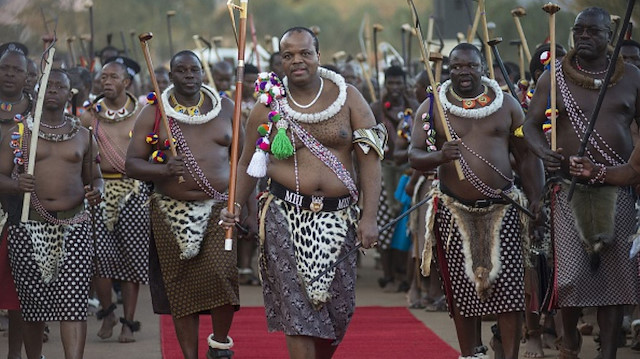
Eswatini, Africa’s last absolute monarchy, named top travel destination by travel guide
The little-known kingdom of Eswatini, formerly known as Swaziland, offers the opportunity to experience rich wildlife, cultural history, and stunning scenery.
Last month, Lonely Planet named Eswatini the fifth-best travel destination for 2020.
Travel guide publisher Lonely Planet described the southern African nation that borders South Africa and Mozambique as "packed with culture, adventure and legendary wildlife."
A 360-kilometer (224 mile) drive from Johannesburg in South Africa -- roughly three and a half hours -- Mbabane is the capital of Eswatini, Africa’s last absolute monarchy.
Temperatures can be cool even in the Summer, with fog and drizzling. However, once the weather clears up, major destinations include the King Sobhuza II Memorial Park and the National Museum, along with beautiful stunning scenery all along the way.
Small mountains with beautiful green valleys line the roads from a distance just off the Mbabane-Manzini highway in Lobamba, the seat of the monarchy and parliament. Spectacular and breathe-taking views of clouds and mist can be seen near the hills.
- Reed dance
The Swati people are proud of their culture and history. Despite growing western influence and modernization efforts in other parts of the continent having diluted some cultures, the Swati have preserved their own well.
The national museum features statues, artifacts, pictures and preserved wild animals that introduce visitors to the history, culture and traditional dress of Eswatini.
In other rooms, there are statues of young girls dressed in brightly colored traditional Swazi attire carrying reeds, who are going for the Reed Dance, an annual traditional ceremony which attracts tens of thousands of unmarried and childless women and girls from different parts of the kingdom.
These women dance for the Queen Mother in an event which spans eight days.
The event also aims to paying homage to the royal family and give the women an opportunity to bond with their cohorts across the country.
The museum also houses statues of young men dressed in traditional Swazi attire, and who are heading for the Incwala, or the first fruits, ceremony. It normally takes place in December and signifies the end of the old year and beginning of a new one. The event also affirms the people’s identity and kinship with the king.
A natural history museum where there are a few preserved wild animals that showcase the link between Eswatini and nature.
Nearby, there is another museum named after King Sobhuza II who led the country to independence in 1968. It houses statutes of the country's beloved king and pictures to its country’s history, as well three classical cars that were driven by the king kept at this museum.
- Nature
The Kingdom of Eswatini is strict in its protection of its wildlife, which allows game rangers authority to shoot and kill poachers. The country is indeed in love with its nature.
No wonder Eswatini is just one of the few countries in the world where you can find both the black and white rhinos, which can often be found at watering holes at the Mkhaya Games Reserve.
According to Lonely Planet, there are a multitude of reserves and national parks in the Kingdom, such as Malolotja nature reserve, a prime spot for hiking, with varied terrain.
The nature reserve is near a river that creates mini waterfalls and rapids as it goes. Here, one will see smaller animals such as zebras, elands, wildebeest and various species of antelope. The publication says, it’s also heaven for bird watchers, housing hundreds of bird species. Other parks feature lions and elephants.
The small Southern African nation ruled by King Mswati III is also popular for its white water rafting, considered the number one adventure for tourists in the kingdom.
It offers rafting expeditions, mountain bike trails where family groups ride as they view nature and wild animals on guided tours.
One can also hike the Sibebe rock, a granite mountain, located 10 kilometers (6.2 miles) from the capital Mbabane.
Sibebe is the second-largest monolith in the world and the largest exposed granite pluton rising 350 meters (383 yards) above the Mbuluzi River valley.


